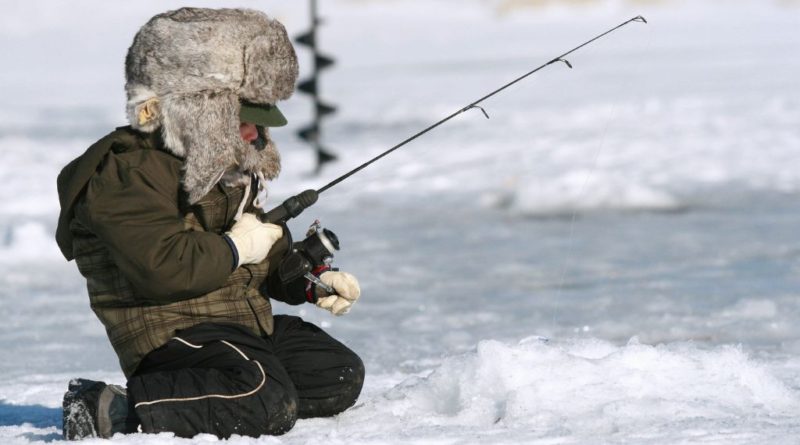Essential Ice Fishing Safety Tips and Opportunities in New York
The Commissioner of the New York State Department of Environmental Conservation (DEC), Basil Seggos, issued a reminder to anglers about the importance of safety during the winter ice fishing season. Given the recent fluctuations in weather conditions, he emphasized the need for outdoor enthusiasts to exercise caution and prioritize safety.
Commissioner Seggos highlighted the unique opportunities that winter in New York offers for enjoying natural resources. Despite the record warmth in 2023 and the relatively mild start to the current winter season, he pointed out that conditions are improving for activities like ice fishing. However, he emphasized the importance of anglers being extremely cautious and prioritizing safety as temperatures drop.
Ice Thickness and Safety
Ensuring the safety of ice anglers is paramount, and understanding ice thickness and conditions is crucial for a secure ice fishing experience. Here are detailed guidelines:
Ice Thickness Evaluation: The primary safety concern revolves around ice thickness and condition. Most water bodies do not freeze evenly. As a general rule, a minimum of 4 inches of solid (clear) ice or 8 inches of white or “snow ice” (which is half as strong as clear ice) is considered safe for walking. To assess ice thickness, drill regular test holes as you proceed, ideally at least every 150 feet.
Avoidance of Unstable Ice Areas: Exercise caution around areas with moving/open water or in proximity to docks, as these locations are often unsafe. Dock owners frequently use “bubblers” around their docks to prevent the formation of thick ice, which could lead to damage.
Ice Safety Picks: Always carry ice safety picks, equipped with two handles and spike points. These tools are invaluable in assisting you to escape from the water in the unfortunate event of breaking through the ice. Ice safety picks can be purchased or easily made using dowels and nails.
Communication and Companionship: Prioritize safety by informing someone about your fishing location and your expected time of return. For adults, fishing with a friend is a prudent practice. Children engaging in ice fishing should always be accompanied by a responsible adult. Using good judgment and adhering to safety guidelines are essential for a secure and enjoyable ice fishing outing.
What To Wear When Ice Fishing in New York
When gearing up for an ice fishing adventure, dressing appropriately is essential to combat the cold conditions. Here’s a guide on what to wear to ensure comfort and safety on the ice:
- Dress in Layers: Start with a base layer designed to wick moisture away from your skin. Avoid cotton clothing, as it loses its ability to keep you warm when wet. Opt for modern wind and water-resistant clothing options, such as those made of Gore-Tex™ or wool.
- Waterproof Boots with Thick Soles: Choose waterproof boots with thick soles to provide insulation between your feet and the ice. The thicker the soles, the better the insulation. Wear moisture-wicking liner socks under warm socks for added comfort.
- Cleats for Boots: To prevent slips and falls on the icy surface, add cleats to your boots. This extra traction is crucial for navigating potentially slippery conditions.
- Extra Gloves or Mittens: It’s wise to bring extra gloves or mittens as these items have a tendency to get wet or misplaced. Having spares ensures that you can maintain warmth throughout your ice fishing experience.
- Disposable Hand and Toe Warmers: Combat the cold by using disposable hand warmers and toe warmers. These are effective in keeping extremities warm. Remember to dispose of the wrappers properly in the garbage and not on the ice.
- Sunglasses: The reflection of the sun off the snow can be intense, so bring sunglasses to protect your eyes from glare. This is particularly important for visibility on the bright, snowy surface.
- Sunscreen: Even in cold weather, the sun’s rays can cause sunburn. Apply sunscreen to exposed skin areas to protect yourself from potential sun damage.
By dressing appropriately with these considerations in mind, you’ll be better prepared to face the cold temperatures and fully enjoy your ice fishing experience.
What Gear Will You Need For Ice Fishing In New York
To embark on a successful ice fishing expedition, having the right gear is essential. Here’s a comprehensive list of equipment you’ll need:
Ice Augers and Spud Bars:
- Spud Bar (Ice Chisel): A metal rod with a sharp tip for chiseling a hole through the ice and checking its thickness. Attach a lanyard to avoid losing it through the ice.
- Ice Auger: A device to drill or cut a hole through the ice. Hand augers require muscle power, while power augers use a motor for quicker and easier hole drilling. Choose the auger size based on your needs.
Skimmer (Ice Scoop): Used to remove slush and ice chunks from the fishing hole, ensuring a clear and clean space.
Tip-ups: Devices that sit over ice holes and signal anglers when fish bite. Most common signals include flags that pop up when fish take the bait. Use multiple tip-ups to increase the chances of catching fish.
- Rigging a Tip-up: Wind 50 yards of backing (Dacron™ or ice-line) on the spool, add a 2- to 3-foot monofilament leader, and use a barrel swivel to connect the leader to the backing. Attach a split-shot sinker to help get the bait down. Set the flag or signaling device based on the type of tip-up used.
- Setting a Tip-up: Attach a weight (depth sounder) to the hook, lower it to the bottom, and raise it to the desired bait depth. Use a line marker to reel up to the water line, allowing you to return the bait to the same depth. Bait the hook, set the flag, and check tip-ups often.
Jigging Rods: Usually 2- to 3-feet long, choose a rod power and line strength based on the fish species you’re targeting. Jigging involves raising the rod tip up and down to attract fish, followed by a pause during which fish typically take the bait.
Lures and Bait: Use small jigs for panfish and small trout, and jigging spoons and swimming jigs for walleye, pike, pickerel, lake trout, or larger trout. Lures are often tipped with live or artificial bait like minnows, minnow heads, or fly larvae.
Sleds/Shelters: Transport your gear with a sled, and consider ice-fishing shelters for comfort. Child’s plastic sleds work well, and specialized ice fishing sleds often come with compartments and attached shelters.
Equipping yourself with these essentials ensures a productive and enjoyable ice fishing experience.
February Free Fishing Weekend in New York
For those interested in trying ice fishing for the first time, Commissioner Seggos highlighted the designated free freshwater fishing weekend on Feb. 17-18. During this weekend, the need for a freshwater fishing license is waived, providing a great opportunity for both newcomers and experienced anglers to enjoy the activity together.
Ice fishing can be more productive than open-water fishing for certain fish species, and anglers limited to shore fishing can access entire water bodies under good ice conditions. Beginners can refer to the Ice Fishing Chapter of DEC’s I FISH NY Beginners Guide to Freshwater Fishing for helpful information. DEC also released a series of six instructional ice fishing videos on their YouTube channel for a more interactive learning experience. Additional information, including a list of waters open to ice fishing, can be found on the DEC ice fishing webpage and the HuntFishNY app.
The use of bait fish is popular in ice fishing, but anglers must be aware of regulations to prevent the spread of invasive species and fish diseases. DEC provides guidelines on bait fish regulations, including using only certified, disease-free bait fish purchased from local tackle stores. Personal collection of bait fish is restricted to the same waterbody where they were caught, and unused bait fish should be disposed of properly on dry land.
To ensure ice safety, DEC recommends anglers to be informed about the location and type of waterbody they plan to fish. An interview about ice safety with Forest Ranger Ashly Carabetta is available for download.
Finally, anglers are reminded to have a valid fishing license, which is valid for 365 days from the date of purchase.
Last Updated on January 16, 2024 by Fish HV Contributors



